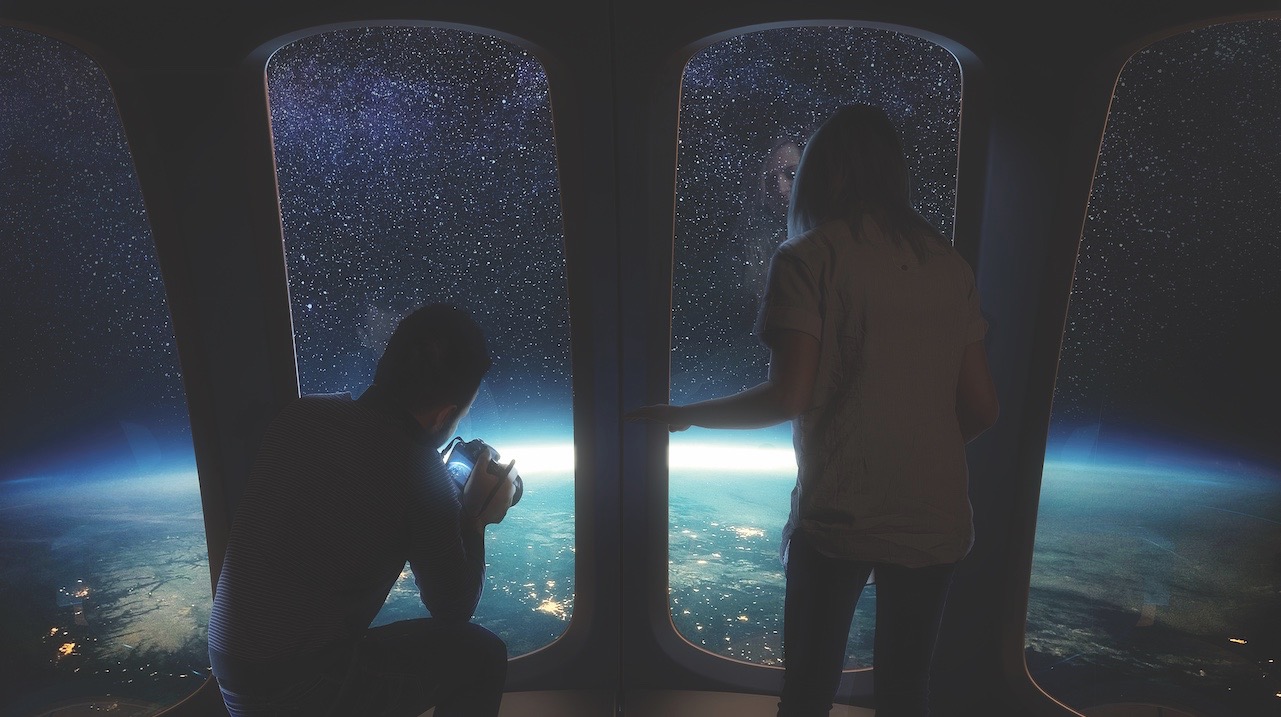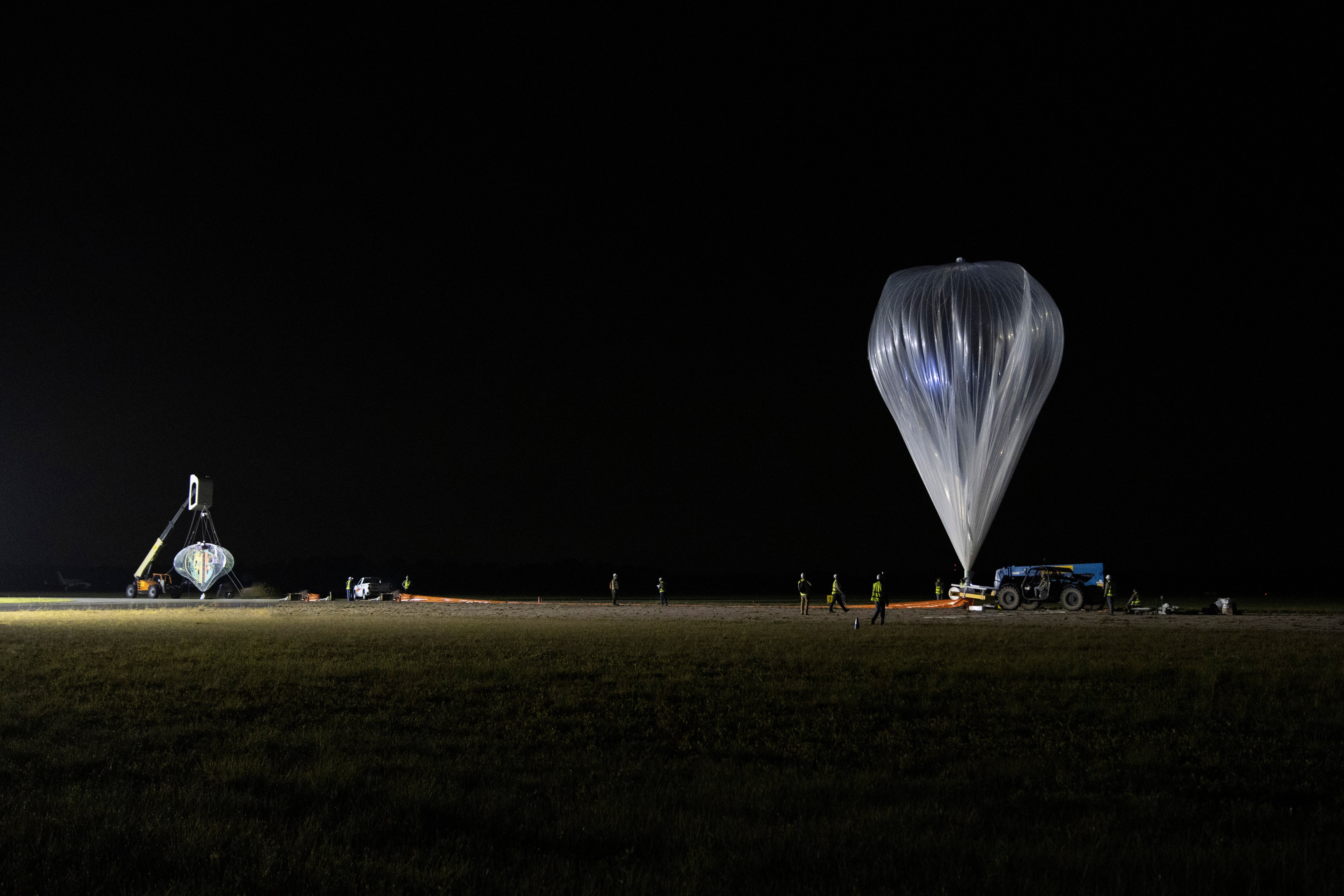
Investors are apparently bullish on balloon tourism.
Space Perspective, which is developing a balloon-based system to carry customers to the stratosphere, announced today (Oct. 14) that it has secured $40 million in "Series A" funding (the financing round that comes after the initial "seed capital").
The Florida-based company has now raised a total of $48 million, keeping it on target to begin commercial operations a few years from now.
"This really sets us up well to move incredibly quickly and efficiently to commercial operations," Space Perspective co-CEO and chief experience officer Jane Poynter told Space.com. "Our published date for commercial flight is around the end of 2024. This financing may even allow us to move that up a bit."
Related: The first space tourists in photos

A different kind of 'space' tourism
In the past few months, space tourists have flown to orbit with SpaceX and to suborbital space with Virgin Galactic and Blue Origin. Indeed, Blue Origin launched "Star Trek" actor William Shatner and three other folks to the final frontier just yesterday (Oct. 13).
Space Perspective, which Poynter and Taber MacCallum founded in 2019, is offering a different kind of experience. The company is building a pressurized capsule called Spaceship Neptune, which will carry eight passengers and one pilot to an altitude of about 100,000 feet (30,000 meters) beneath an enormous balloon.
Get the Space.com Newsletter
Breaking space news, the latest updates on rocket launches, skywatching events and more!
Space Perspective customers won't experience weightlessness. But they will get to see Earth against the blackness of space, and they'll enjoy a leisurely, luxurious and prolonged ride — one that lasts about six hours from liftoff to splashdown, company representatives have said. (Spaceship Neptune will make ocean landings beneath its recyclable balloon.)
In June, Space Perspective started selling tickets aboard Spaceship Neptune for $125,000 apiece. That's quite a bit cheaper than a suborbital trip; Virgin Galactic is selling seats aboard its VSS Unity space plane for $450,000 each. Blue Origin has not divulged its ticket prices, but they're thought to be in the same neighborhood as Virgin Galactic's, if not higher.
Customer interest in Space Perspective has been extremely high, Poynter said.
"Our first year of flight is completely sold out, and we're partway through selling out our second year of flight," she said. The company anticipates making 25 operational flights in that first year, then ramping up the cadence after that, Poynter explained.
Space Perspective has a competitor in the balloon-tourism field. Earlier this month, Arizona-based company World View Enterprises announced that it's developing a stratospheric balloon system as well, with the first customer flights targeted for early 2024. World View is selling seats for $50,000 each.
Poynter and MacCallum helped found World View back in 2012 but are no longer with the company.

Expanding our perspective
Space Perspective conducted an uncrewed test flight to 108,000 feet (32,900 m) on June 18. That successful mission, which lifted off from Space Coast Spaceport in Florida, suspended an unpressurized capsule beneath one of the company's 300-foot-wide (90 m) balloons.
The next test flights aren't expected until next year, when the final Spaceship Neptune will be finished and ready to take to the skies, Poynter said.
Initially, all Spaceship Neptune missions will lift off from Florida — from Space Coast Spaceport, the Shuttle Landing Facility at NASA's Kennedy Space Center or Cecil Spaceport in Jacksonville. But Space Perspective plans to extend its geographic reach quickly, offering liftoffs from a variety of spots around the world.
"I can't wait to take our customers up to see the northern lights," Poynter said. "We've already been in discussions with areas that we could launch from that would afford that experience to our customers, where there are already spaceports that we can do this from. And it's just going to be the most incredible experience ever."
As its name suggests, Space Perspective aims to vastly expand the number of people who have seen Earth from very high up and have thus glimpsed our planet as it truly is — a fragile and lonely outpost of life in a dark and infinite void. This experience can be transformative, as many astronauts have attested after they returned to Earth.
"This change in perspective will have a ripple effect through society," Poynter said. "That's incredibly important, and I think it's often overlooked."
Mike Wall is the author of "Out There" (Grand Central Publishing, 2018; illustrated by Karl Tate), a book about the search for alien life. Follow him on Twitter @michaeldwall. Follow us on Twitter @Spacedotcom or Facebook.
Join our Space Forums to keep talking space on the latest missions, night sky and more! And if you have a news tip, correction or comment, let us know at: community@space.com.

Michael Wall is a Senior Space Writer with Space.com and joined the team in 2010. He primarily covers exoplanets, spaceflight and military space, but has been known to dabble in the space art beat. His book about the search for alien life, "Out There," was published on Nov. 13, 2018. Before becoming a science writer, Michael worked as a herpetologist and wildlife biologist. He has a Ph.D. in evolutionary biology from the University of Sydney, Australia, a bachelor's degree from the University of Arizona, and a graduate certificate in science writing from the University of California, Santa Cruz. To find out what his latest project is, you can follow Michael on Twitter.









